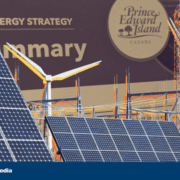Elon Musk and Richard Branson want to bring clean energy to Puerto Rico. It won’t be easy.
Long before Hurricane Maria ripped into Puerto Rico on September 20, it was clear that one of the island’s greatest vulnerabilities was its decrepit, sagging power system almost entirely dependent on fossil fuels. Under the brute force of the Category 4 storm, the aging and poorly maintained power plants and transmission lines sustained such significant damage that nearly a month later, power has only been restored to 21 percent of the island.
Virgin Group founder Richard Branson, who weathered Hurricanes Irma and Maria on his private island in the British Virgin Islands with its own renewable energy-powered microgrid, is launching a green energy fund to rebuild the Caribbean with wind and solar power.
Tesla CEO Elon Musk has broached restoring power using solar power and batteries with Puerto Rico’s Gov. Ricardo Rosselló, who said he is open to the possibility.
Tesla wins contract to supply Powerpacks at world’s first solar+wind+storage project
Last month, it was revealed that Tesla is working with world’s largest wind-turbine maker, Vestas, to deploy batteries at their wind farms.
Now Tesla won its first contract with the company and as it turns out, it’s not only for a wind farm but actually the first solar+wind+energy storage project in the world. Australia’s Windlab is managing the $160 million project at the Kennedy Energy Park hybrid renewable energy site in North Queensland.
They announced today that they secured financing from the Clean Energy Finance Corporation and the Australian Renewable Energy Agency and they selected Vestas, Tesla, and Quanta for the project.
The US government underestimated solar energy installation in the US by 4,813%
The only thing certain in this life are death, taxes and the US department of energy’s massive underestimate of renewable energy capacity. Every two years, the US Energy Information Administration (EIA), America’s official source for energy statistics, issues scenarios about how much solar, wind and conventional energy the future holds for the US. Every two years, since the mid-1990s, the EIA is wrong. Last year, it was spectacularly wrong.
The Natural Resources Defense Council and Statista recently teamed up to analyze the EIA’s predictions for energy usage and production. It found that the EIA’s ten-year estimates between 2006 to 2016 systematically understated the share of wind, solar and gas. Solar capacity, in particular, was a whopping 4,813% more in 2016 than the EIA had predicted it would be.
Solar industry fears for thousands of jobs should U.S. impose import restrictions
Singapore-headquartered solar panel maker REC hopes to be exempt from potential U.S. restrictions on imports following a recent trade finding that said no significant injury to the United States had been caused by makers including those from Australia, Canada and Singapore..
U.S. President Donald Trump is expected to announce by early next year measures which his administration will take to limit imports after the U.S. International Trade Commission found in September that U.S. panel makers had been harmed by cheap imports. Many companies have warned that a solar trade dispute involving potential import tariffs between the United States and other countries could cost thousands of jobs and slow down the development of the clean energy technology.














Comments